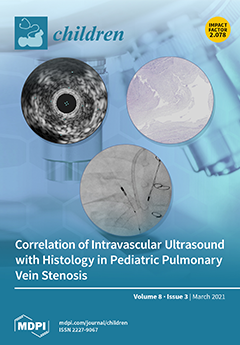Open AccessArticle
A Household-Based Survey of Iodine Nutrition in Moroccan Children Shows Iodine Sufficiency at the National Level But Risk of Deficient Intakes in Mountainous Areas
by
Laila El Ammari, Naima Saeid, Anouar Talouizte, Hasnae Gamih, Salwa Labzizi, Jamila El Mendili, Anass Rami, Mohamed Idrissi, Kaoutar Benjeddou, Fatima ezzahra Zahrou, Mohamed Elmzibri, Amal Tucker Brown, Ayoub Al-Jawaldeh, Abdelhakim Yahyane, Michael Bruce Zimmerman, Khalid El Kari and Hassan Aguenaou
Cited by 5 | Viewed by 2602
Abstract
Historically, mountainous areas of Morocco have been affected by endemic goiter and severe iodine deficiency. In 1995, Morocco legislated salt iodization to reduce iodine deficiency. There has been no national survey of iodine nutrition in school-age children for nearly 3 decades. Our aim
[...] Read more.
Historically, mountainous areas of Morocco have been affected by endemic goiter and severe iodine deficiency. In 1995, Morocco legislated salt iodization to reduce iodine deficiency. There has been no national survey of iodine nutrition in school-age children for nearly 3 decades. Our aim was to assess iodine nutrition in a national sample of 6–12-year-old children in Morocco to inform the national salt iodization strategy. In this cross-sectional household-based survey, we randomly recruited healthy 6–12-year-old children from 180 clusters in four geographic zones (north and east, central, north and south) covering the 12 regions of Morocco. A questionnaire was completed, including socio-economic status and parental level of education. In addition, anthropometric measurements were taken to assess nutrition status, and a spot urine sample was collected to measure urinary iodine concentration (UIC). A total of 3118 households were surveyed, and 1043 eligible children were recruited, 56% from urban areas and 44% from rural areas. At the national level, the percentage of surveyed samples with UIC < 50 μg/L was 21.6% (19.2%; 24.2%), which exceeds the WHO suggestion of no more than 20% of samples below 50 μg/L, despite an adequate level of median urinary iodine concentration (mUIC) at 117.4 µg/L (110.2; 123.3). There were no statistically significant differences in mUIC comparing urban vs. rural areas and socio-economic status. However, the mUIC was significantly lower in the central (high-altitude non-coastal) zone (
p < 0.004), where the mUIC (95% CI) was deficient at 89.2 µg/L (80.8; 102.9). There was also a significant difference in the mUIC by head of household education level (
p = 0.008). The mUIC in Moroccan children >100 µg/L indicates iodine sufficiency at the national level. However, the percentage of surveyed samples with UIC < 50 μg/L above suggests that a significant proportion of children remain at risk for iodine deficiency, and it appears those at greatest risk are residing in the central (high altitude non-coastal) zone. A national level mUIC value may conceal discrepancies in iodine intake among different sub-groups, including those defined by geographic region.
Full article
►▼
Show Figures






